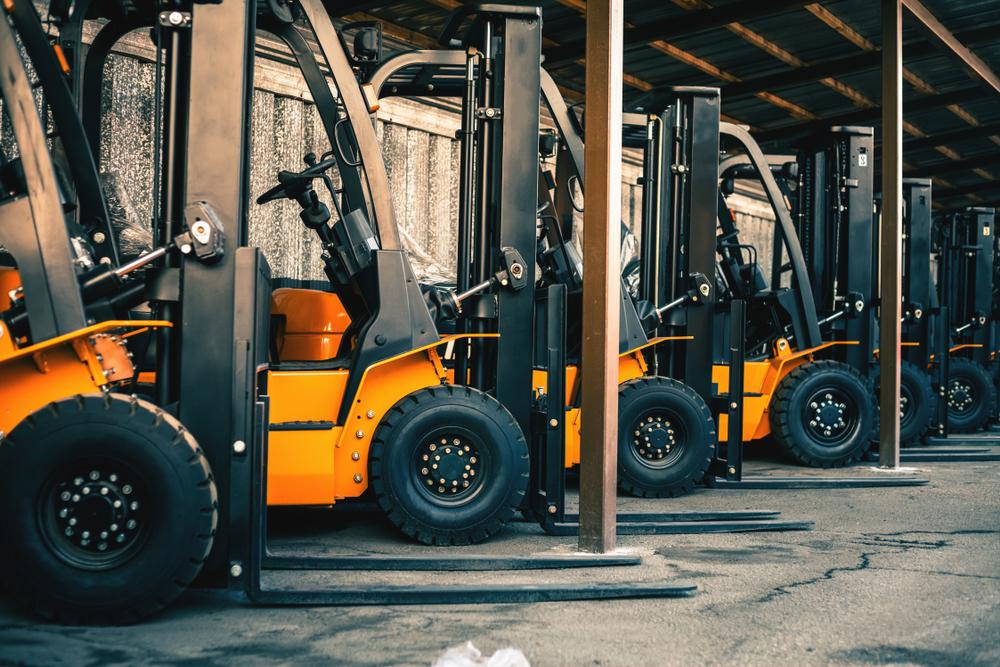
8 Forklift Safety Tips
Forklifts can be an extremely useful tool and make the task of moving heavy loads much more efficient. Though useful, forklifts are still heavy machinery and practicing safety when handling them is crucial to the wellbeing of workers and others. Forklifts can cause injuries for drivers and pedestrians. To help protect workers from workplace injuries caused by forklifts, the Occupational Safety and Health Administration (OSHA) has outlined forklift safety measures that businesses and workers can take.
In the United States alone, more than a million forklifts are operated. OSHA estimates that there are nearly 110,000 forklift accidents every year and roughly 70% of those accidents could have been avoided with the appropriate training. In fact, forklift-related citations are in OSHA’s top 10 violations each year.
Knowing that most of these injuries and fatalities can be avoided with the proper forklift safety is good motivation to read the following steps.
Know Forklift Operation Requirements
To protect workers, OSHA has established requirements to ensure safety during forklift operation. These requirements can be found in 29 CFR 1910.178. OSHA obligates employers to provide a training program that includes general operation instructions, information on vehicle types, and OSHA’s safety requirements. Through a combination of formal and practical training, workers should learn about forklift safety through lectures, videos, written material, and software training. Workers should receive certification every three years, and workplace evaluations should reveal that forklift operators know how to do the work safely.
Dress Appropriately
Forklift operators should be aware of the safest clothing to wear while using heavy machinery. If there’s no specific dress code for the workplace, keep your own safety in mind and take precautions. Choose fitted clothing that is not too loose, hard-toe safety shoes, and hi-visibility clothing. In some situations, a hard hat may be appropriate as well.
Recognize Common Hazards of Forklift Operation
Forklifts come with a whole slew of possible hazards for workers and nearby pedestrians. Some of the most common include unsecured loads, forklifts tipping over, falling, accidental collisions, bad floor marking, and slippery floors. Forklift operators need to know how to avoid these common hazards to help prevent injuries and fatalities.
Practice Daily Check-Ups
Before climbing into the driver’s seat of a forklift, workers should give their equipment a quick check-up. In this check-up, the worker should notify a manager if any problems are identified. Always follow the operating manual procedures. Here’s a quick checklist for daily inspections:
- Check tires and oil levels
- Inspect for any liquid leaks
- Look at forks for any possible cracks
- Test all operating components, including brakes, horns, steering wheel, and lights
- Keep an eye out for possible obstructions
Climbing into a Forklift Safely
Injury can occur even before or after you work with a forklift, specifically when you’re climbing in or out of the driver’s seat. Check for your head clearance as you get into the forklift so you don’t hit your head on the overhead cage, and be cautious of slipping on the step. Never grab ahold of the steering wheel to balance yourself because it could move and throw off your balance.
Practice Safe Driving
To protect coworkers and yourself while operating a forklift, it’s important to drive according to the markings on the floor. Ensure that the load is balanced, secured, and riding as low as safely possible. Keep the forklift at the posted speed limits, and keep your eyes on the road. If you can’t see around a load, drive in reverse to have a clear view of what’s ahead. Don’t hesitate to use the horn at intersections.
Establish Forklift Protocol for Everyone
While not everyone may be a forklift operator, it’s important to have rules in place to keep workers safe. In areas with high forklift traffic, post signs, aisle markers, and procedure labels. It may be smart to also have a floor marking system in place to help direct traffic. At intersections where forklifts and pedestrians meet, place safety signs. OSHA outlines basic parameters for floor marking, requiring that red colors denote fire-related hazards while yellow colors represent caution.
Beware of Possible Forklift Tipover
One big hazard of a forklift is a tipover. Generally, there are two basic types of tipovers that should be avoided: the forward tip or lateral tip. When a tipover is in motion, the response needs to account for the type of tipover and the forklift class. Based on the type of forklift, there is a different set of directions for dealing with a tipover.
Protecting workers from forklift injuries and fatalities means having the right visual communication cues in place, appropriate training, and floor markings. In the event of a workplace injury due to a forklift, be sure to report the injury immediately to your manager and consider speaking with a personal injury lawyer to discover your legal options. Email us today at office@carrilloinjurylaw.com to find out if you have a case under the law.
Sources
https://www.graphicproducts.com/infographics/10-rules-for-forklift-safety-infographic/
https://www.osha.gov/SLTC/etools/pit/operations/maneuvering.html
https://www.yale.com/emea/en-gb/latest-innovations/safety-and-training/20-tips-for-safe-handling/
- Log in to post comments